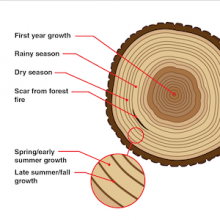Browse
Modern (1800 CE - 1950 CE)

Review
Newberry Library French Pamphlet Collection
Its thousands of documents provide users the opportunity to explore a critical period of French history and its global implications in high resolution.
Review
Louvre Museum Official Website
The site promotes careful attention to the many angles of understanding for each piece: its material qualities, the artist’s background and motivation, larger artistic trends of the period, and the local and global historical context.
Review
Digital Collections - Penn Museum
The digital collections of the Penn Museum are extensive and easily accessible through their online portal. Its written, visual, and audio sources invite many groups to explore world history by browsing its pieces.
Review
Digital Archive of Latin American and Caribbean Ephemera
The Digital Archive of Latin American and Caribbean Ephemera offers a valuable option for virtual research and exploration.Review
Age of Revolutions
Two features are particularly valuable for students and teachers: the thematic bibliography section and the ‘Teaching Revolutions’ section.
Methods
Primer: Environmental History
Environmental history lends itself particularly well to a world history framework. Environmental processes do not limit themselves to national or cultural borders. The climate, for example, has always been a global system.

Review
Studs Terkel Radio Archive
As stated on the tin, the Studs Terkel Radio Archive is dedicated to digitising and archiving the numerous radio programs that Louis “Studs” Terkel (1912-2008) made throughout his prolific career.
Review
Crash Course World History
Crash Course World History is a perfect supplementary video overview for AP students, but it is too fast and jumpy to be the main source of learning for a class.
Review
National Museum of China
In summation, the NMC site has a number of areas that will prove interesting to educators and most casual visitors, but overall, its main function is to provide information about the museum itself.
Review